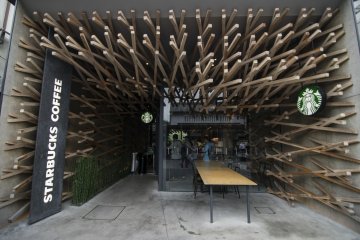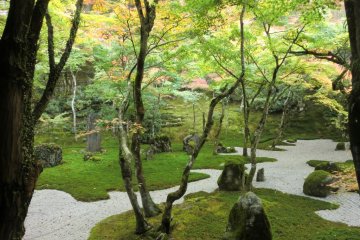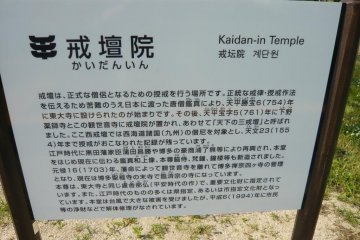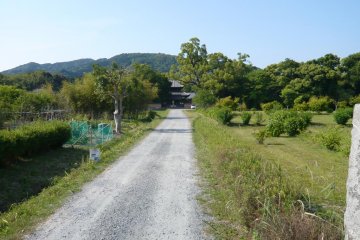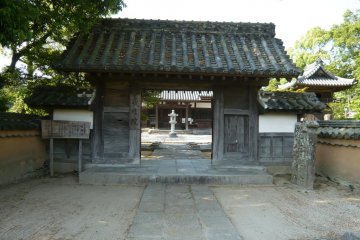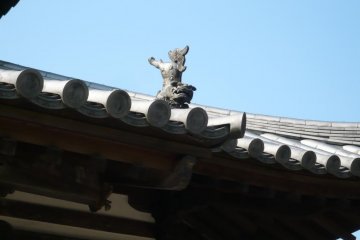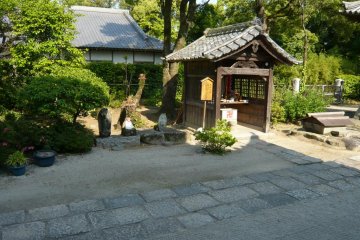Kaidan-in is a Buddhist Temple situated in Dazaifu, Fukuoka Prefecture. It is a Rinzai Temple founded by Ganjin in 761. Ganjin (Jianzhen) was a Buddhist monk from China. Ganjin attempted to visit Japan several times before having a successful voyage in 753 (it was during his last failed attempt to visit Japan that Ganjin lost his eyesight as he walked home along the Yangtze River). After landing at Kagoshima on Kyushu Island, Ganjin traveled to Nara and was welcomed by the Emperor. While at Nara, Ganjin presided over Todai-ji. During this time Chinese religious scriptures were introduced to the Japanese. It was at Todai-ji that the first ordination platform in Japan was created. Kaidan-in, along with Todai-ji in Nara and Yakushi-ji in Tochigi Prefecture were the three official ordination halls during the Nara period. Kaidan-in was first built in 761. The hall that is its place was built in the 17th century.
The seated statue of Rushana Buddha dates from the late Heian period (794-1192). Rushana is a form of the cosmic Buddha, Dainichi (Vairocana). This deity was introduced during the Nara period. It is an important cultural property designated by the Japanese government. Dainichi (Vairocana) is a celestial Buddha. This Buddha is seen as the embodiment of the concept of “emptiness.” In the “Five Wisdom Buddhas" of Vajrayana Buddhism, Vairocana is at the center. In Tibetan tradition, there is a female Buddha for every one of the Five Wisdom Buddhas. Vairocana’s consort is “White Tara” (in Tibet). These five Buddhas are primary in worship and meditation in Shingon Buddhism, a school of Vajarayana Buddhism originated in Japan by Kukai.
It was during this period of the introduction of Buddhism into Japan that the country was being transformed from a backward culture into a highly developed society. After the construction of Todai-ji, the influence of Nara prefecture was in decline but the establishment of Buddhism in Japan had instilled the ruling class with guidelines and principles that guided them forward. During this period, the seat of government in Dazaifu in Fukuoka Prefecture was considered one of the important seats of government and religion in Japan.
The Ritsu (Risshu) school of Buddhism is one of six schools of Nara Buddhism. During the Kamakura period, the school was located at Toshodai-ji, Kaidan-in, Saidai-ji and Senny-ji. During the Meiji restoration, the Ritsu sect was folded into the Shingon sect by government decree. Only Toshodai-ji retains its role as a Ritsu Temple as it resisted the government decree.





